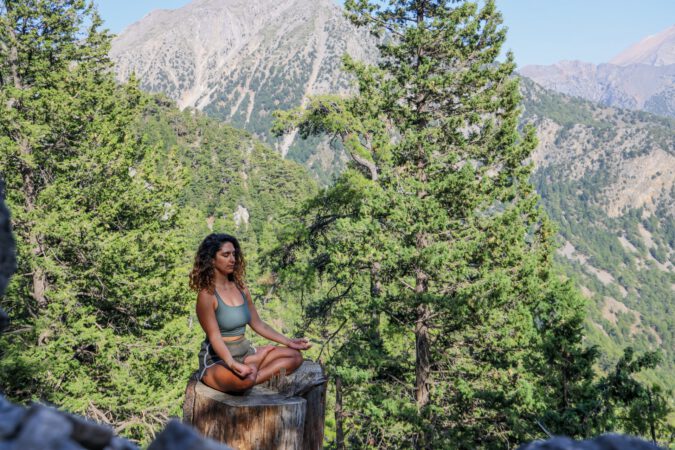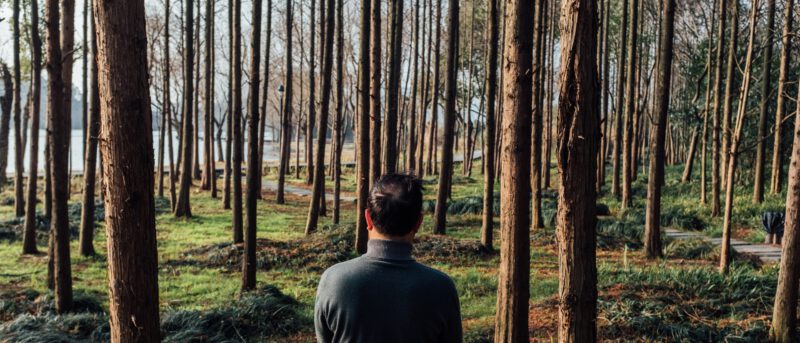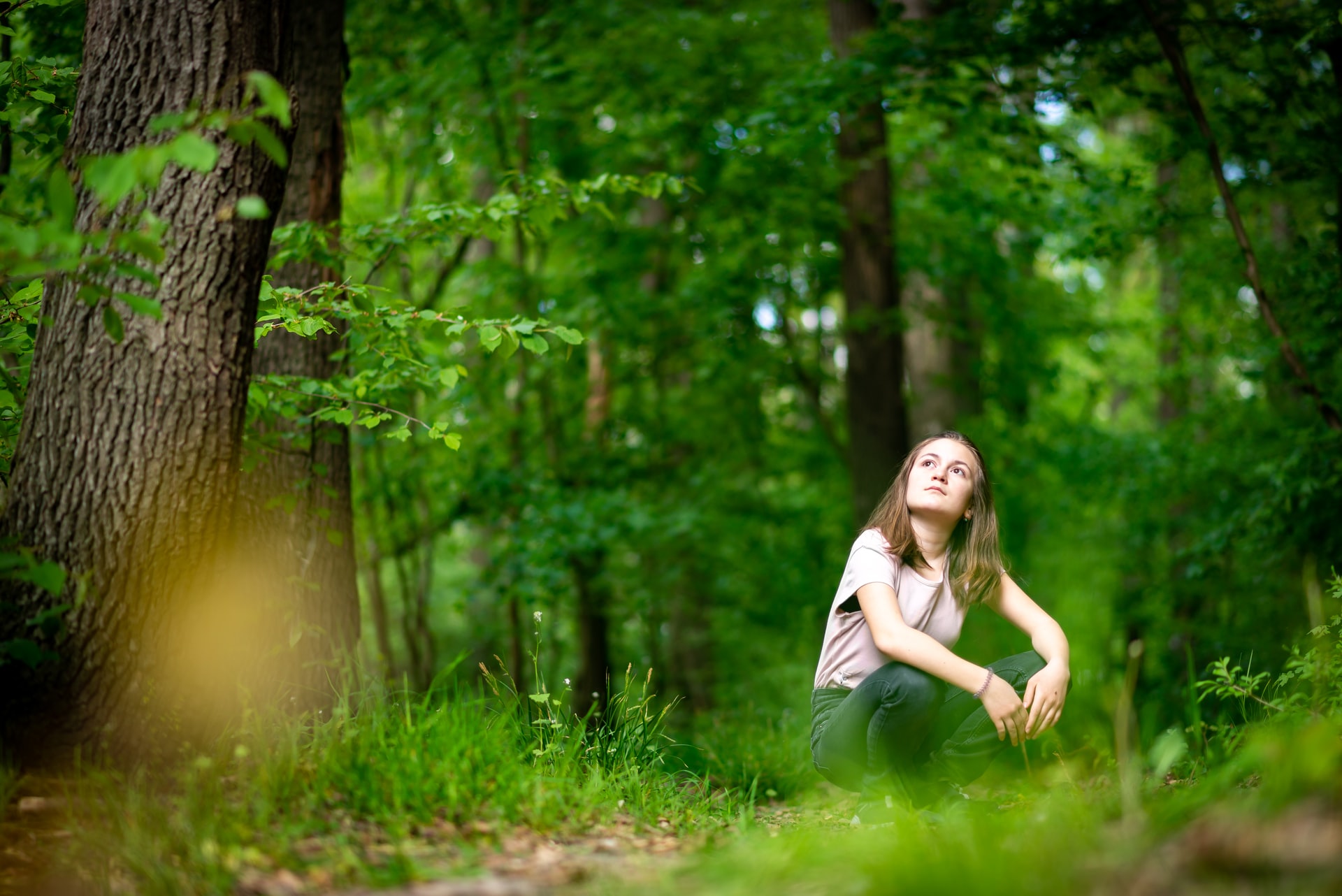A walk in the woods is good for both the body and the soul, with its fresh green leaves, rustling leaves, and the scent of pine needles. Many people are drawn out into nature, especially during Corona. However, the fact that exercise in the forest improves health is not just a popular belief; it has been proven by numerous scientific studies.
So-called forest bathing has even become a real health trend in Japan, and it has now spread to Europe and the United States. But why does the forest improve health, what exactly is forest bathing, and how does it work?
What Exactly Is Forest Bathing?
Forest bathing, which refers to a consciously experienced, relaxing stay in the forest, was invented in Japan. The Japanese name “Shinrin Yoku” means “bathing in the forest,” which does not imply bathing in a forest lake, but rather bathing in the forest’s atmosphere.
Shinrin-yoku is based on being aware of nature with all of your senses, often in combination with relaxation exercises.
Forest bathing has been promoted as an important part of a healthy lifestyle in Japan by politicians and medical scientists since the 1980s. Many studies on the topic of forests as a health factor originate in Japan, where so-called forest medicine is a recognized field of research.
However, the health benefits of spending time in the forest are increasingly becoming the focus of scientific research in Europe, the United States, and Australia.
What Is the Process of Forest Bathing?
Forest bathing has already become an important part of preventive health care in Japan. In the meantime, appropriate courses for learning forest bathing are available in Germany and many other countries.
These include, in addition to the walk, mindfulness or breathing exercises, as well as relaxation techniques from yoga or qigong.
Although there are no set rules or instructions for forest bathing, the following tips can help make it more enjoyable:
Forest bathing entails being acutely aware of your surroundings through all of your senses. Concentrate on sounds, smells, or colors, such as the rustling of leaves or the scent of pine needles.
The walking pace is slow, and the walk is long. The length of a forest bath is not specified, but it can last several hours. However, a study conducted in the United States found that even 20 to 30 minutes of exercise per day helps reduce the stress hormone cortisol in the blood.
- Take your time and avoid any important appointments for the day. You should not be hurried.
- Take frequent breaks and drink plenty of fluids. Water or tea are especially advised.

What Is the Purpose of Forest Bathing?
Forest bathing or a simple walk in the woods are both beneficial to the body and mind. The following health benefits, in particular, have been scientifically proven:
Psychological:
- Relaxation through reduced noise and exposure to natural forest sounds and smells.
- Natural impressions provide a distraction from the stresses of everyday life.
- Increased sense of well-being as a result of the forest’s quiet atmosphere
Physical:
- decreased cortisol levels
- blood pressure reduction
- Immune system bolstering
- Musculoskeletal relaxation
- Respiratory tract humidification
Studies show that regular trips to the forest can help prevent and treat mental illnesses like depression and burnout by making people feel less stressed.
Also, scientific evidence shows that having lower blood pressure and less stress can lower the risk of heart disease.
Regular exercise in the forest reduces susceptibility to many other diseases by strengthening the body’s defenses. The following describes how these effects occur.

Why Is Forest Bathing Beneficial?
The positive effects of the forest on the mind and body are due to a variety of factors. Forests, for example, have their own local climate. This means that the dense foliage mitigates environmental Forest Bathing for your Brain – The posofactors such as solar radiation, heat, and cold. The humidity is higher, which moistens the respiratory tract and makes it less susceptible to bacteria and viruses. Trees also contribute significantly to the concentration of oxygen in the atmosphere.
Furthermore, trees act as a sound barrier, and the canopy of leaves creates a pleasant twilight that is easy on the eyes. Forest sounds, such as bird chirping, and pleasant smells do the rest to make us feel good in the forest by increasing the activity of the parasympathetic nervous system.
This component of the autonomic nervous system is especially active during rest and serves to regenerate the organism. It lowers the pulse and blood pressure when it is active. The tranquil atmosphere helps to relax the muscles.
Terpenes: Beneficial Messengers
Furthermore, trees emit messenger substances. Trees use terpenes to communicate with one another, for example, to more effectively repel fungi or pests. They are found in the forest air and are secreted by leaves and needles.
During a walk in the woods, these terpenes are absorbed through the skin or through breathing and thus enter the bloodstream. Because of this, when the weather is right, you should wear short clothes so that you can get more sunlight and absorb more terpenes.
Studies by the Japanese scientist Qing Li, who was one of the first people to study forest medicine, show that tree messenger substances boost the activity and number of killer cells in the blood, which helps the immune system.
Natural killer cells are a type of white blood cell that is part of the immune system. Natural killer cells, for example, can recognize and kill virus-infected cells.
They are also thought to increase the production of messenger substances in the brain that can regulate cortisol, blood sugar, and blood pressure levels. Cortisol levels that stay high for a long time are linked to a weakened immune system, depression, and a higher risk of heart disease.

Does Forest Bathing Make Sense in a Park?
According to the findings of an Australian study, trees play a critical role in the forest’s positive effect on health. It makes no difference whether these are in a forest or a park, for example. It should be noted, however, that the amount of messenger substances in the air increases as the number of trees grows. According to the study, a stay in a green area with few or no trees does not have the same effect as a walk in the forest.
Does Forest Bathing Work in the Winter?
In theory, forest bathing is also possible in the winter. To be sure, the bright colors of spring, fall, and winter are absent, as is the singing of birds as a pleasant background noise. Even in the dead of winter, there is much to discover in the forest, and the healthy terpenes are still present. Also, exercising outside is good for both the body and the mind at any time of the year.
How Much Does Forest Bathing Cost?
The fact that you don’t have to be particularly fit or athletic to participate in forest bathing is a significant advantage. Another advantage is that it is free. You can, however, attend a course or seminar to learn it under professional supervision.
Finally, Going to the Forest Is Good for Your Health!
Numerous studies show that spending time in the forest, whether in the form of forest bathing, a walk, or exercise, has a positive effect on the psyche and physical well-being, such as lowering blood pressure and strengthening the immune system. As a result, the forest can be a significant health factor. So, from a scientific point of view, it’s also a good idea to take regular walks in the forest.
Frequently Asked Questions About Forest Bathing
For whom is forest bathing suitable?
A: Forest bathing is suitable for all people who can move in the forest or be taken there and have access to a forest or a group of trees.
For what age is forest bathing suitable?
A: There are no restrictions, forest bathing is suitable for all ages and has postitive effects.
How long do you have to stay in the forest?
A: There is no exact specification for the duration of forest bathing. However, from my experience, you should spend at least 2 hours in the forest surrounded by trees. More is better, of course.
Is there a special season for forest bathing?
A: No, forest bathing is possible at any time of the year. However, the effect is particularly high in spring and summer.
Do I have to move during forest bathing?
A: It makes sense to support the circulation during forest bathing through moderate movement and active breathing. It is sufficient to walk at a slow pace. However, movement is not a must.
Can I also do forest bathing without movement?
A: Yes, you can also practice forest bathing surrounded by trees. One should be careful to breathe consciously and enjoy the silence.
Is there a special time of day for forest bathing?
A: No, any time of day is suitable for forest bathing. However, it is more effective during daylight hours, because you additionally absorb the visual stimuli of the forest and thus increase the recreational effect.
Can I eat and drink while forest bathing?
A: Yes, there are no restrictions. However, you should avoid alcohol and fast food. After all, you want to promote your health and well-being.
Can I use the telephone while bathing in the forest?
A: You should avoid talking on the phone while bathing in the forest. The goal of forest bathing is to reduce stress by changing into a healthy, natural and relaxing environment. Talking on the phone means distraction and is therefore not advisable. The same applies to social media activities during forest bathing.
Can forest bathing also be done in a group?
A: Yes, there is no limit to the number of people. However, you should make sure that each participant keeps as quiet as possible so as not to disturb the concentration of the others.



1 thought on “The Psychological and Health Benefits of Forest Bathing”
Comments are closed.